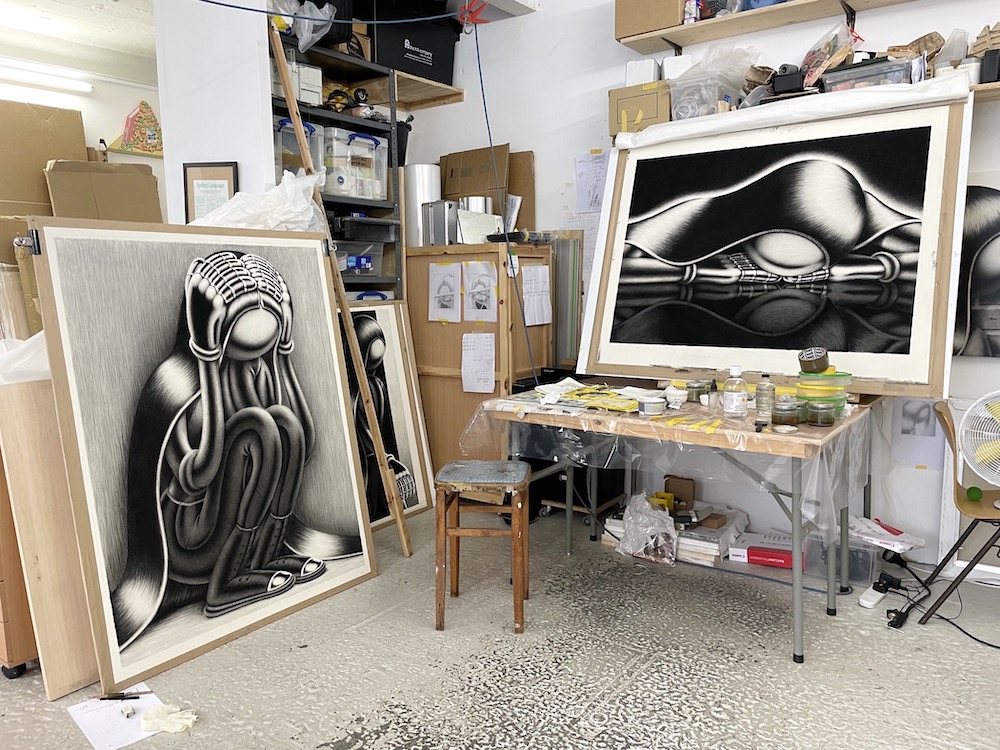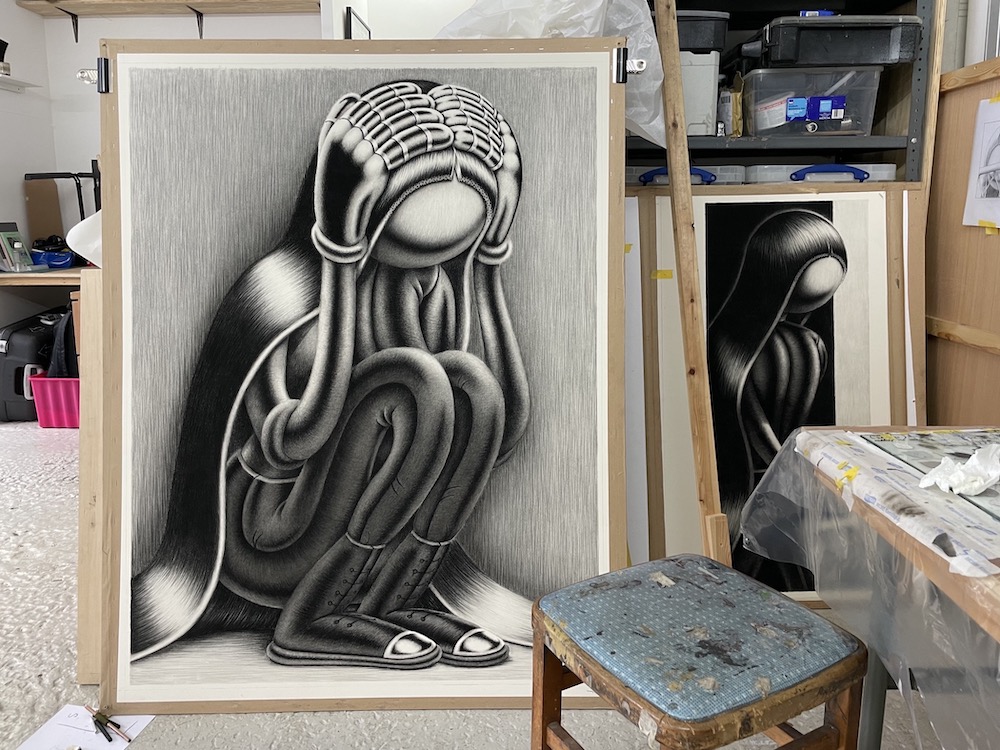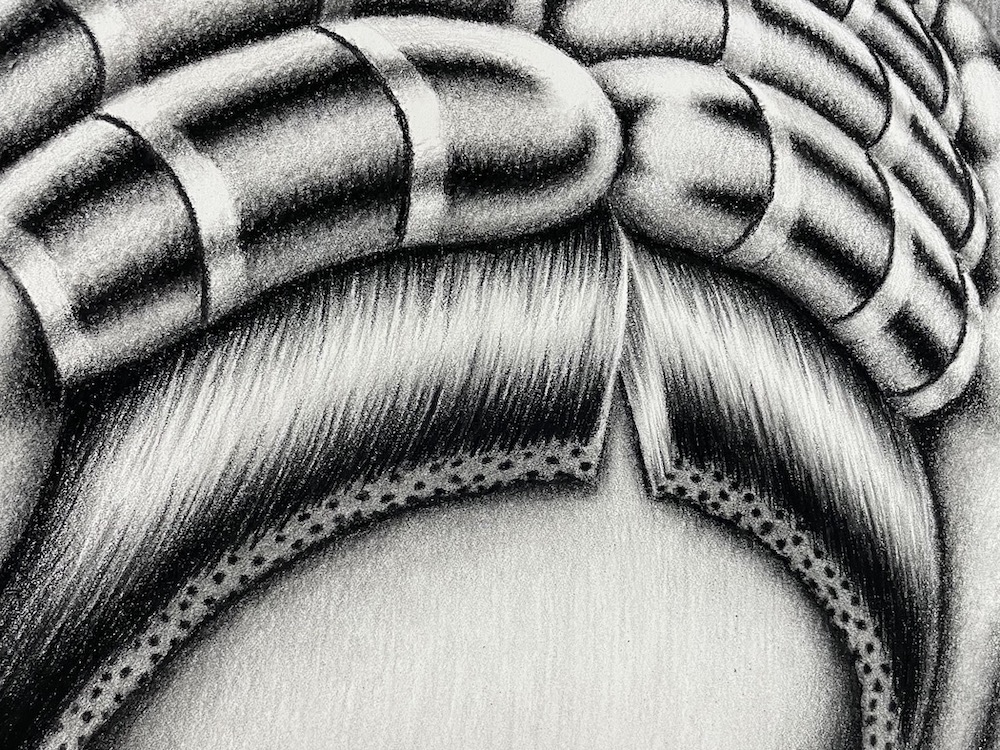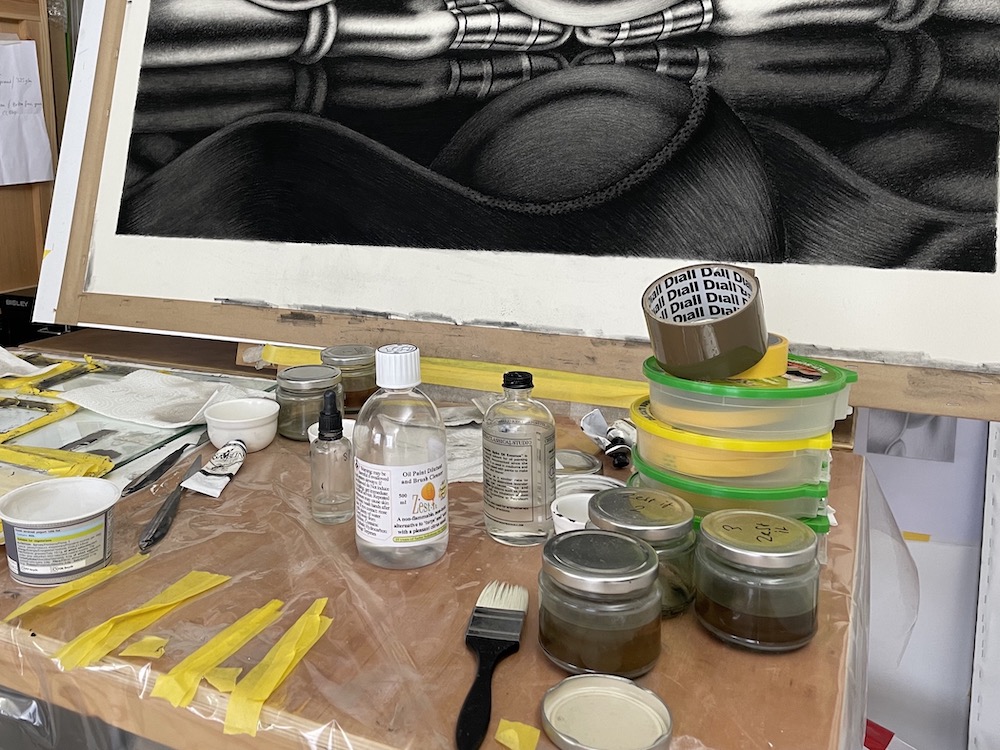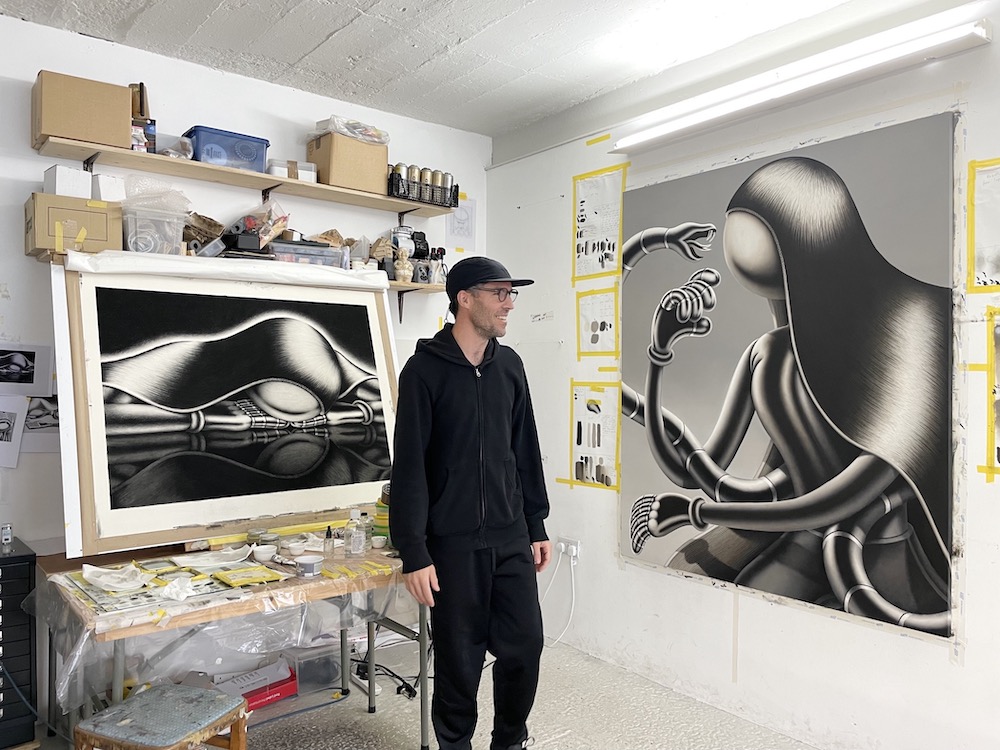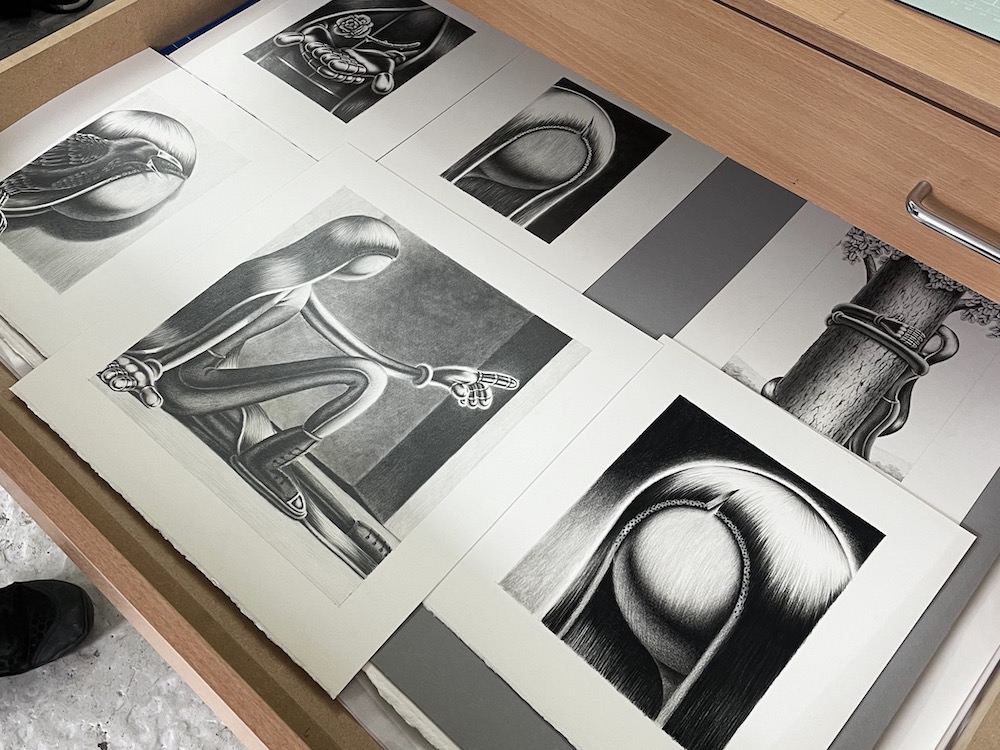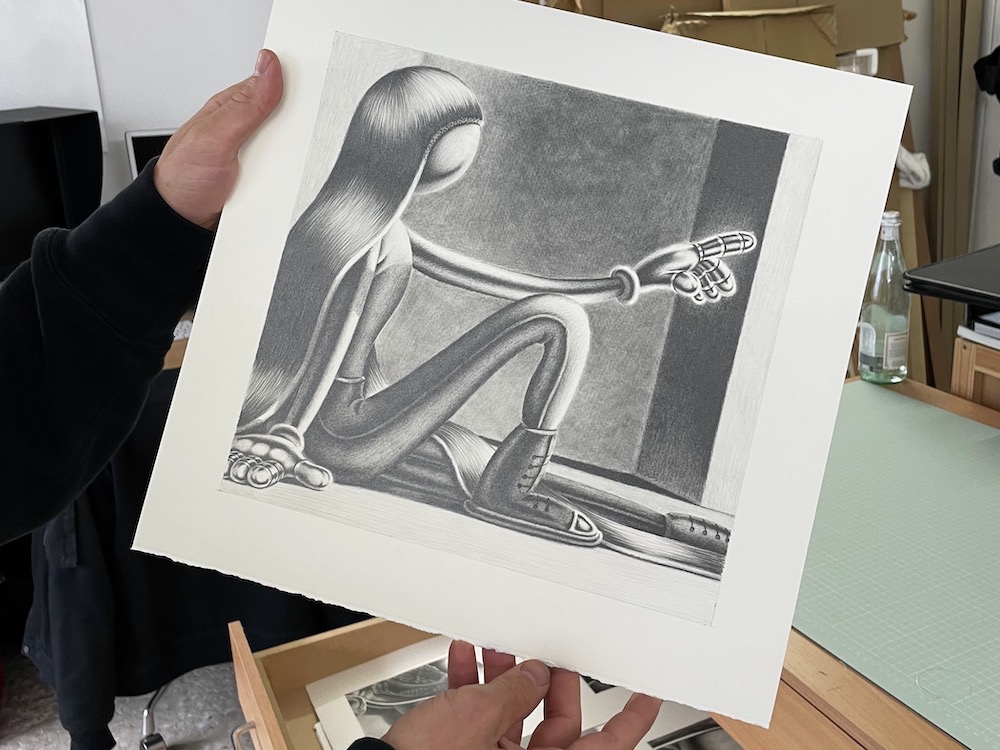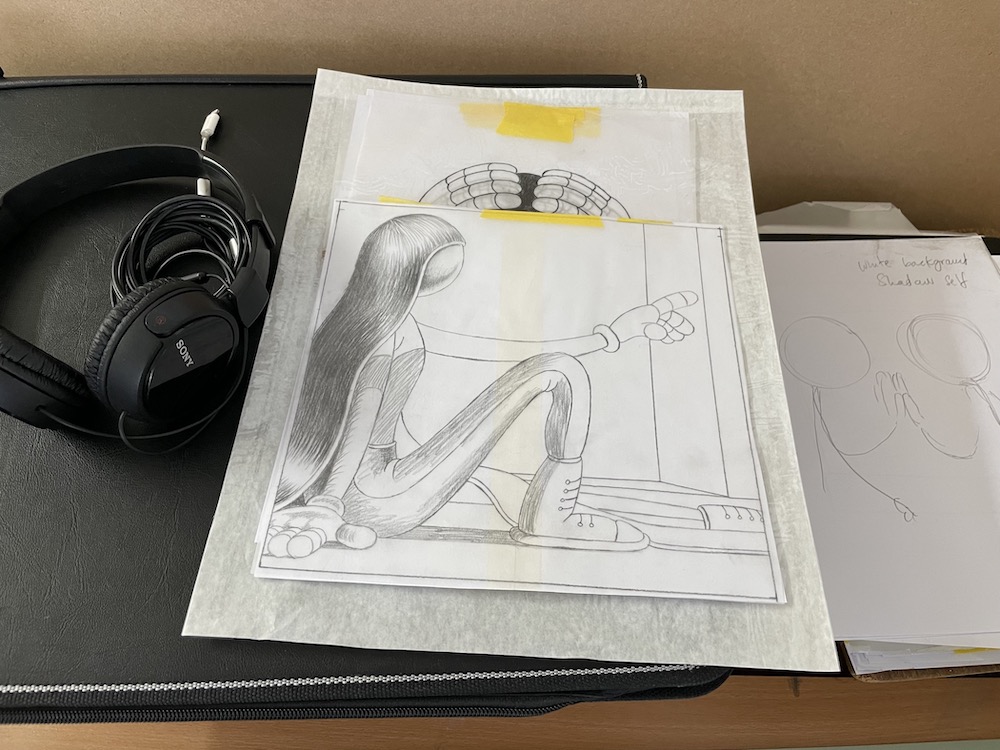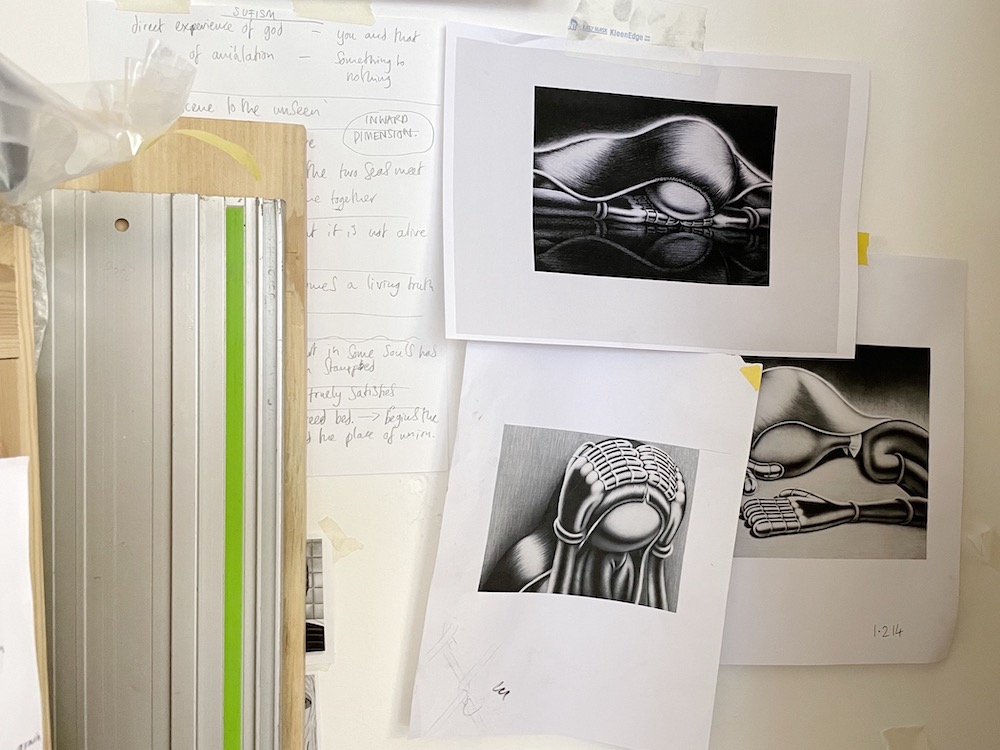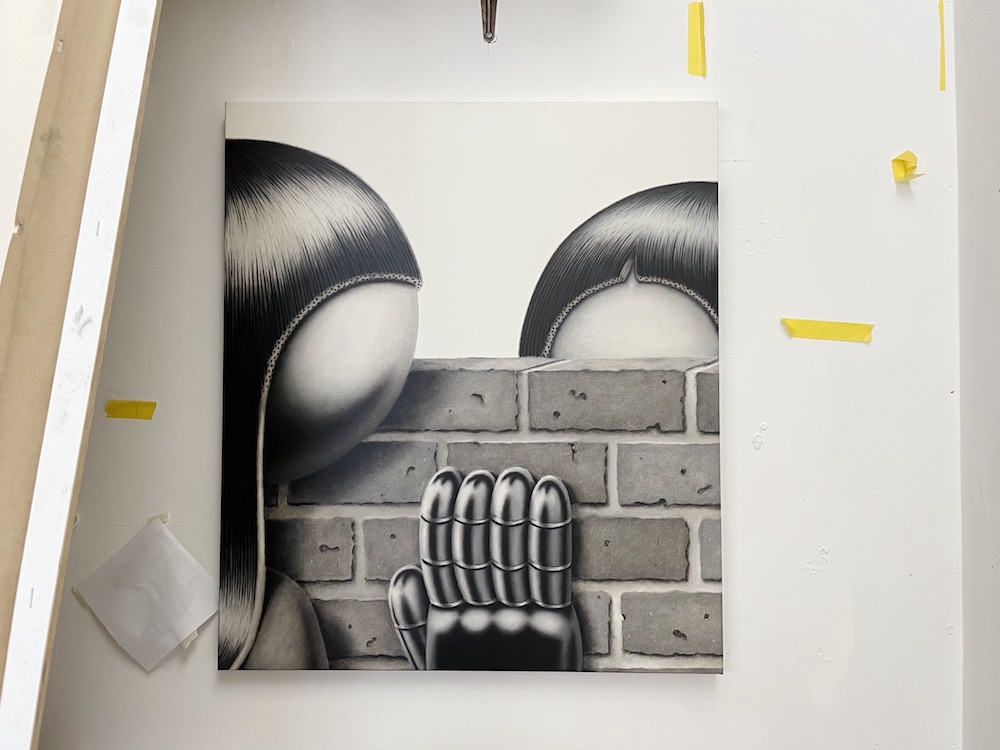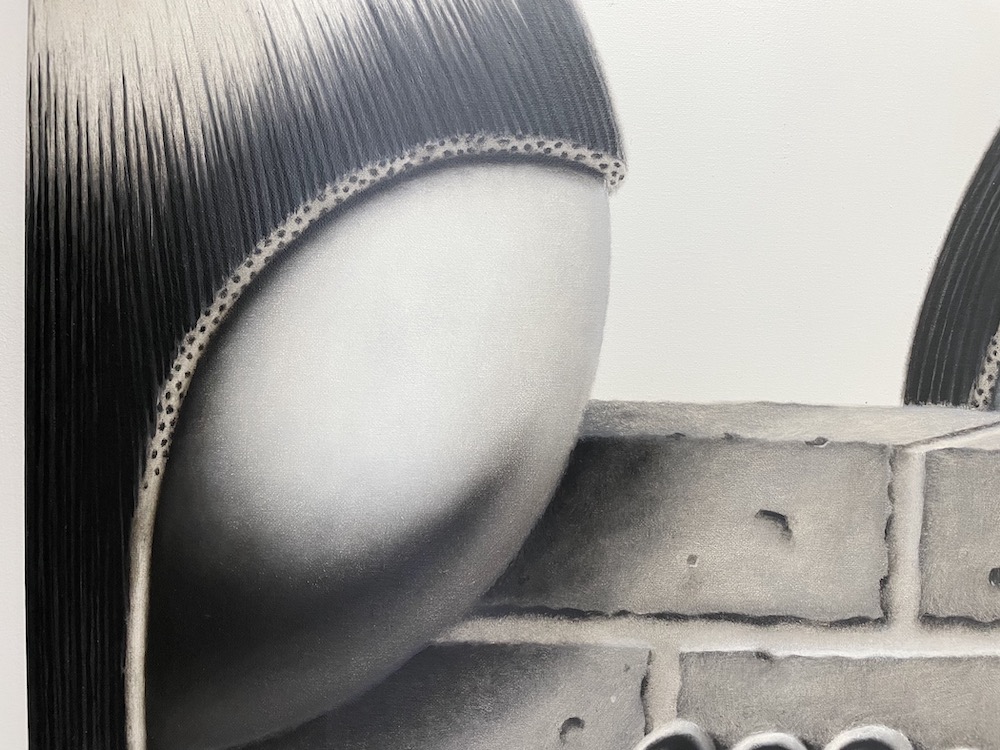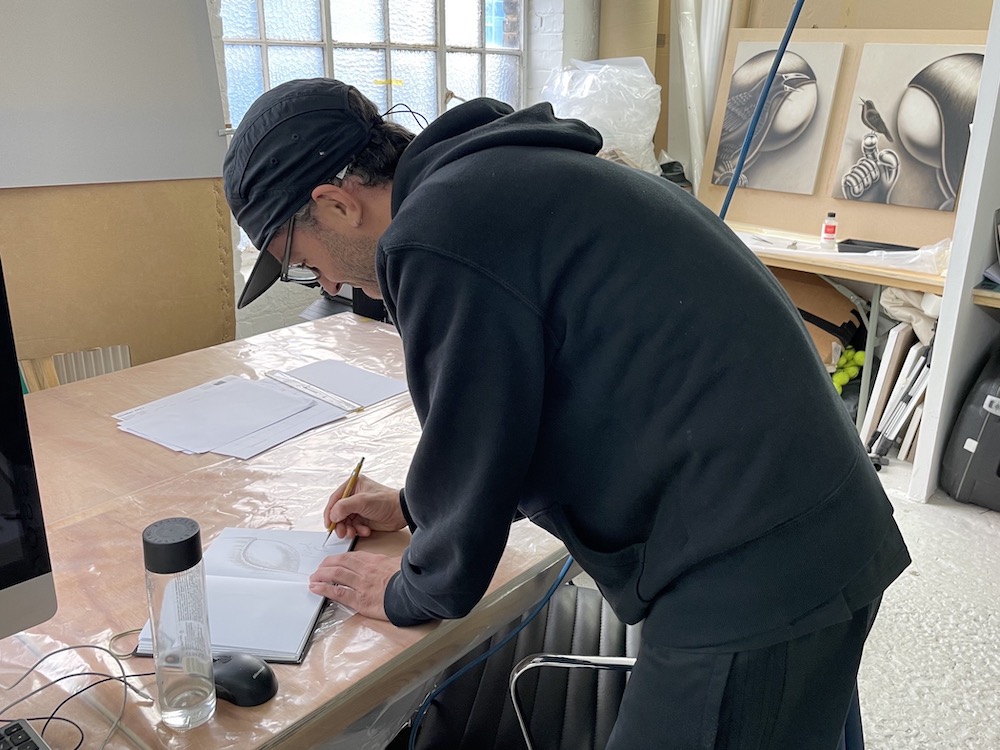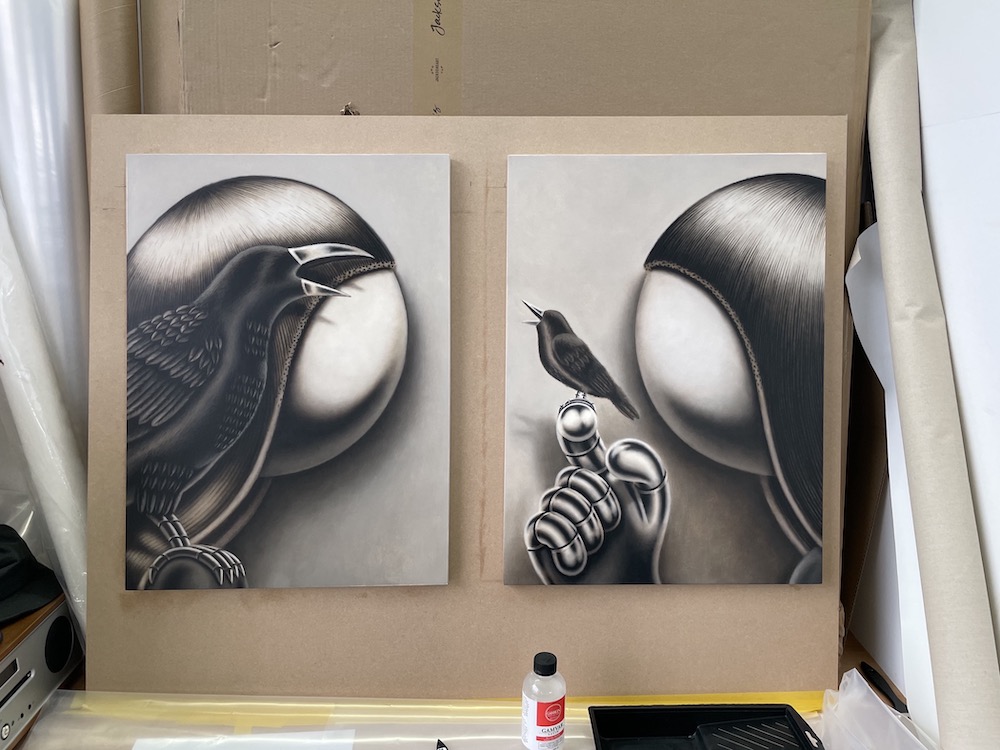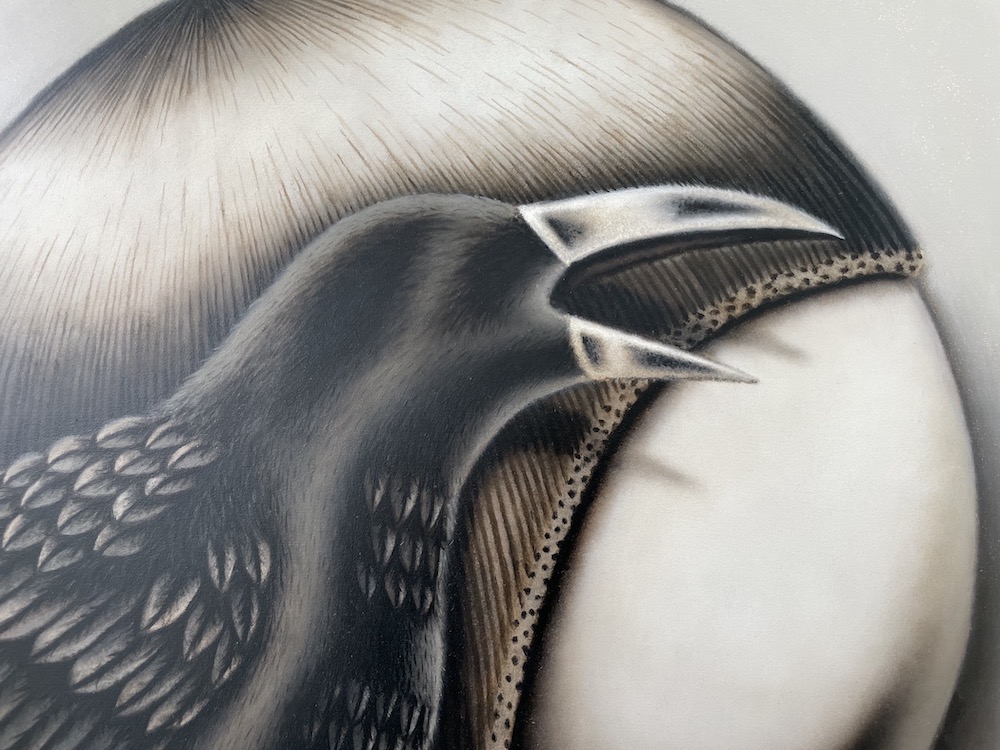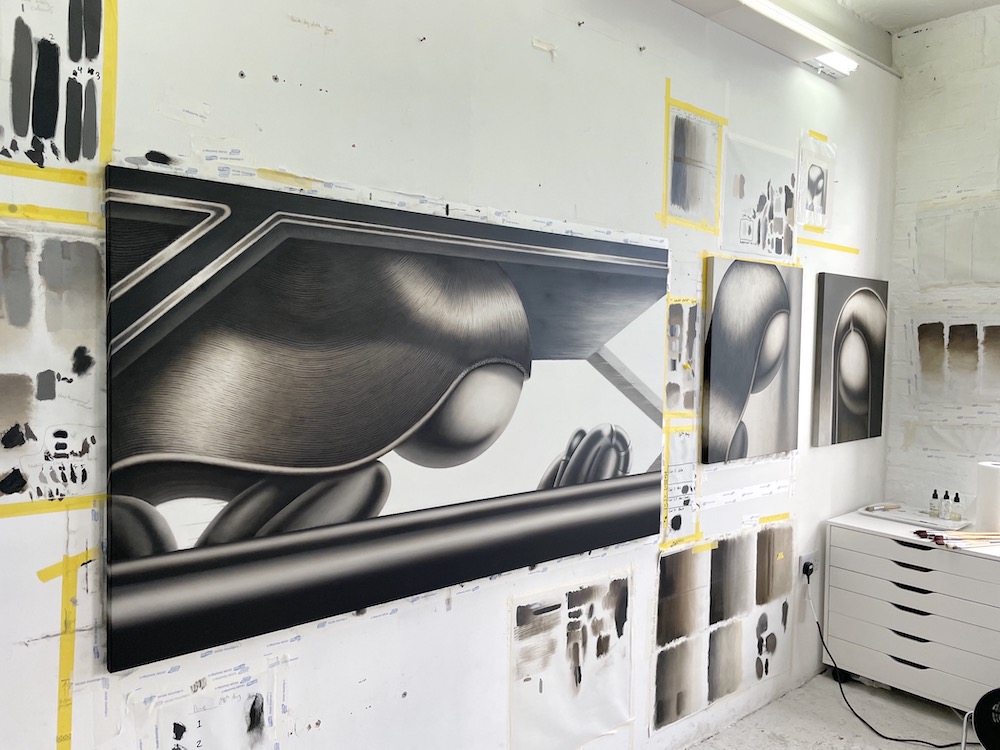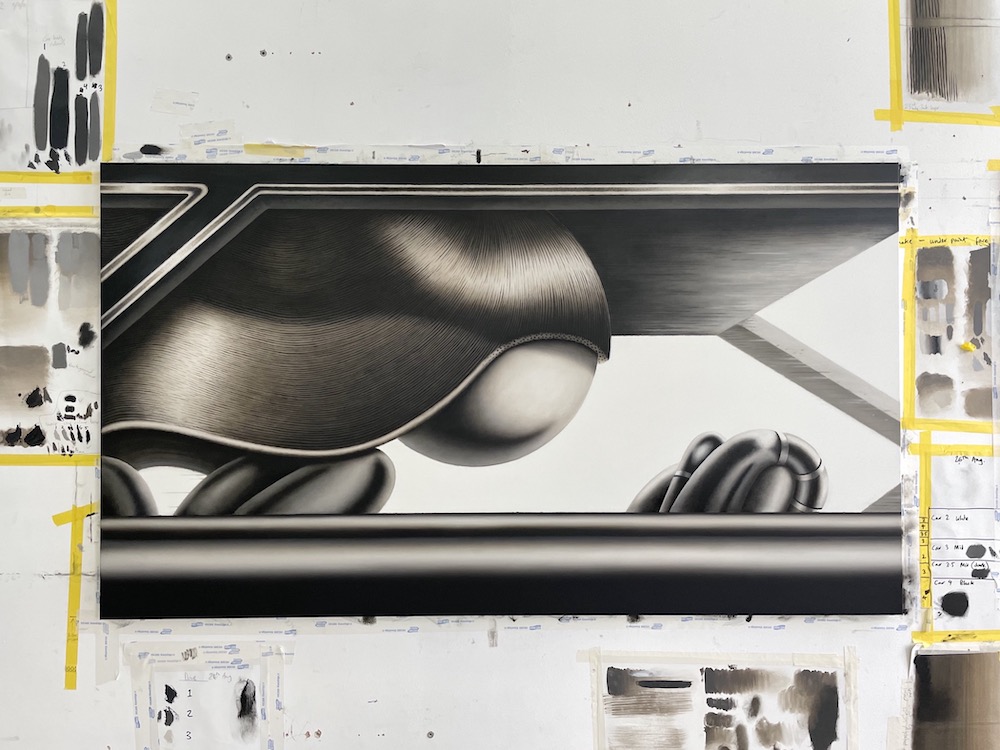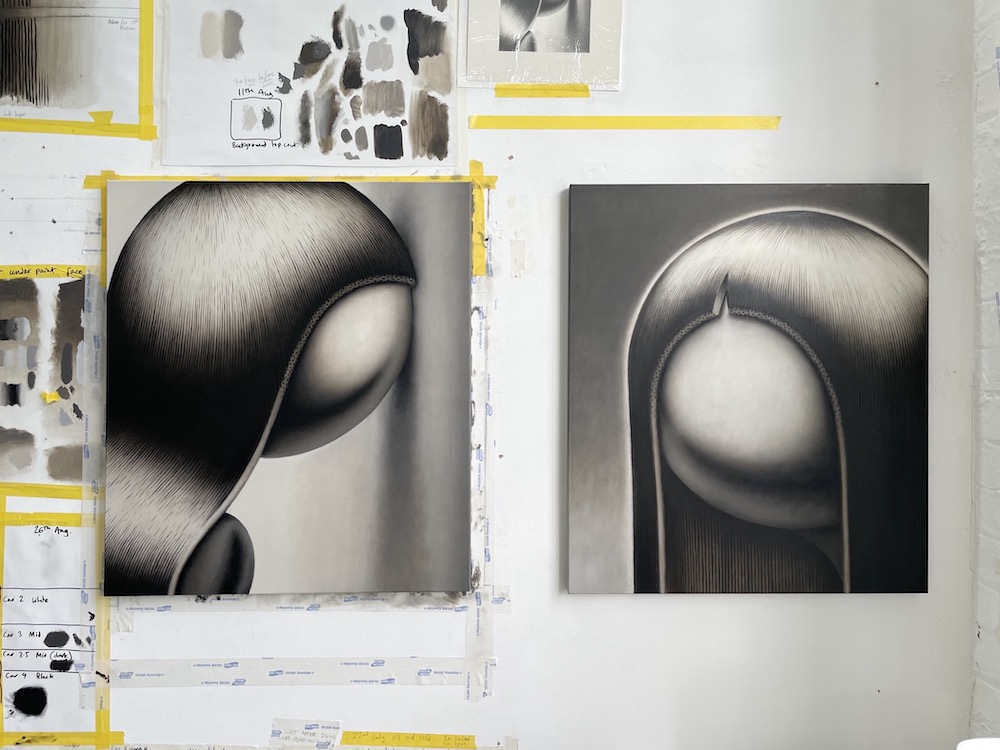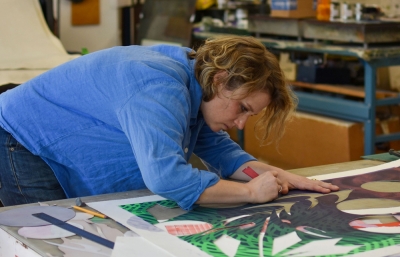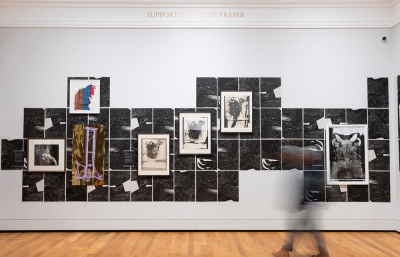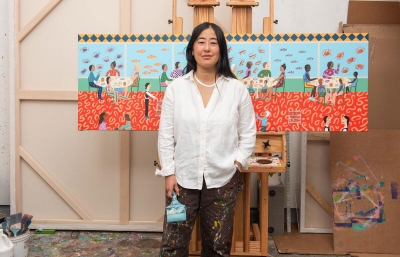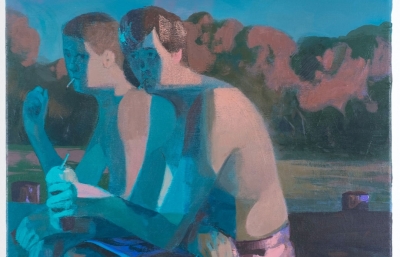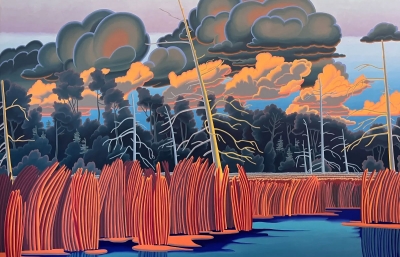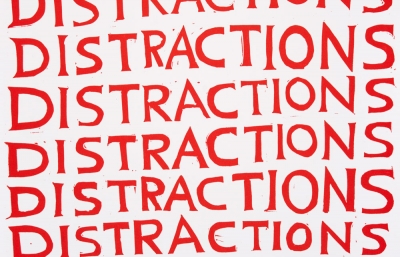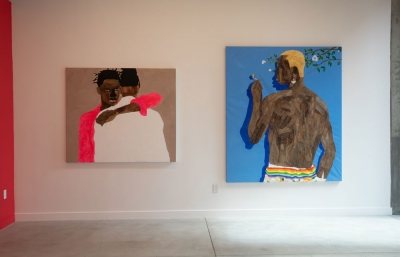Some sort of limitation can often be an avenue for most impressive developments and this is something we've been noticing over and over again with the artists who curb their practice to working in the grayscale spectrum only. One of those artists is Nigel Howlett whose velutinous graphite and charcoal pieces on paper we've been enjoying for some time, but it's his recent shift towards oils that got us fully entranced.
A few weeks ago, we got the chance to visit Howlett's studio in London and see the works for his major solo debut which just inaugurated the new space of OJIRI gallery in the heart of Shoreditch, a new venture by Ochuko Ojiri from the former Ramp Gallery. This was one of those exceptionally well-timed visits as we got to see most of the work for the show at their finished, or very close to finished phase. And the entire body of work took our breath away. Because while his work on paper translates exceptionally well on a screen, there is this silken, peachy veneer that just can't be noticed but with the naked eye. Especially the subtle introduction of sepia-like brown radiance in his newly developed series of oils depicting the life of an androgynous, robotic-like character.
With an opportunity to finally discuss these intriguing and so-well-crafted works, we sat with Howlett and talked about this particular show, the origins of its title, his relationship with the techniques, and the recent shift towards sculpture which was part of the show in a form of a bronze bust produced in collaboration with Case Studyo.
Sasha Bogojev: Can you tell me a bit about the origin and the idea behind your androgynous, robotic-like character?
Nigel Howlett: I’m interested in transhumanism and our evolution as a species which is where the futuristic suit and robotic gloves come from.
Is that where the title of the show, The Face Before You Were Born, comes from?
The title's origin is in Zen Buddhism which says ‘Show me your original face before you were born’. I like the impossibility and mystery of this statement which is really about finding your true authentic self. For me, titles are a way to set a tone or space to view the work from. Another saying in Mysticism is ‘The teacher is without a face and without a name’. This resonates with me and this type of saying can either be a catalyst for an idea or a way for me to view the work after it’s been made.
Speaking of ideas, can you walk us briefly through your process?
I don’t have a rigid way to come up with ideas, things may come from song lyrics, movies, or paintings. I keep a sketchbook and things often start with words or really rough scribbles which I then edit over time.
What sort of scenes does the work depict and is it more about the story of that moment or perhaps about something else?
The feeling of a piece needs to be relevant, accessible and hopefully carry an emotional weight. The symbolic language I use explores political and social ideas both personal and collective. So this might be how we react to the pandemic or for the piece I made for the Avant Arte group show last summer at WOAW in Hong Kong, how the new security laws there affect its citizens.
Are the concerns about contemporary life and issue often seeping into your work?
The snake painting in my solo show is called Rebirth, I was thinking about the virus we are living with - it’s wrapped itself around us and we are coming to terms with this. Other sources I return to for inspiration are the books The Extreme Self and The age of Earthquakes or Adam Curtis films. This body of work takes a lot of inspiration from The Extreme Self and specifically a quote from Emmanual Iduma - ‘Although we tend to agree with Egyptian mythology that the creator makes us in two corresponding forms, one as shadow and the other substance, it is still unclear what happens to the face of our phantom self, if it ever ages, or if it even has a face.’
You recently made a long-awaited transition to oils. How did that feel and how did it affect your work and what sort of things do you miss about oils compared to charcoal or graphite?
I’ve always dreamt of painting with oils but it often felt too daunting to try and the situation was never quite right. This year I went for it. It slowed things down a little because I had a lot to learn and at times challenging because I’m using a slightly obscure medium and solvent system which is very sensitive to ratios. Overall it feels very natural and I’m really into it!
Did this switch inform your process or visual language in any way, besides the introduction of the sepia-like shades?
When I draw I start with a light layer and gradually get darker. This feels very much like an underpainting. With paint, I like to show the warm earthy tones of my underpainting and allow them to come through and add depth to the piece. Drawing has its limits, painting opens everything up. I can’t wait to grow in confidence with it, I have a lot of ideas to explore! 
Any particular ideas you have in mind?
I’m only using white, black, and raw umber at the moment but it’s amazing to see all the different hues and colors that subtly come through from this limited palette.
And how did it feel to translate the work to bronze and did that experience influence your practice or possible future work?
The bronze was great to do and I feel so lucky to be working with Case. I have a background in model making and set design so it was not unfamiliar for me to be working in 3 dimensions. I want to continue with sculpture to run alongside my drawing and painting practice.
I guess the model-making background explains the strong sense of volume in your work, right?
I’m always leaning into 3 dimensions when I work in 2d, sometimes I push this too far and it affects the composition or simplicity of a piece and I have to rein it in. I like an image to sit in a space that has some shape but all the normal perspective rules don’t quite fully apply. That’s the sweet spot! I think I need to explore this more in sculpture which I’m really excited about.
https://nigelhowlett.co.uk/

